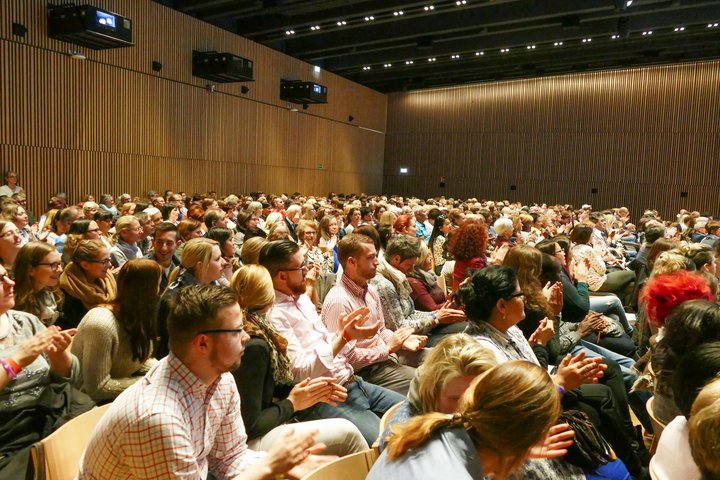Until recently, pioneer specialist investors led the way in impact investing. Now, an increasing number of impact funds are being created by mainstream asset managers.
In August, 42 leaders in the field convened at the Alpbach Forum to consider the fundamentals of impact investment. The leaders were invited to reflect the diversity of experience across the impact ecosystem and across the globe, and the depth of their insights was outstanding.
The dramatic change and growth in impact investing could be a massive win, opening up much greater scale of finance for good, and over time creating the opportunities for the public to place their savings where their values live.
But not all impact is equal. A commercial fund seeking scale and full risk-adjusted market returns is not the same as a specialist impact investor dedicated long-term to resolving complex, tough social issues. Both are valuable, each is different.
Distinct roles
Individual approaches to social issues are helpful, but only long-term, multiple approaches, really change people’s lives. That’s the clear learning from my 40 years in social organisations – creating, working, leading, governing and regulating them.
To make a lasting difference – particularly to leave people more capable to solve their own problems – it’s crucial to start by engaging with them, to understand how they live with the problems, and what they believe good would look like.
It’s crucial to understand the system which holds them in disadvantage, and to engage with other partners to have all the tools that are needed to break out into a new and better system. It’s crucial to keep to the line of least harm, as nothing is without its side effects.
And it’s crucial to leave more value than you extract, and if at all possible, to leave people with ownership of their own assets.
This is intensive work for dedicated specialists, not work that can be done from a large scale, risk-adjusted market-returns fund. What those funds can do is to offer scale: picking up success stories from the pioneer work, escalating the impact more widely; and building the infrastructure on which the pioneer work can become more possible.
Both are highly valuable, but they are not the same.
Knowing where you stand
Investors and end-users alike need to know what they are getting, when engaging in investment. Commercial-level impact investment relies on trust with investors: if they are sold something that is not real, that trust will be lost and damage not just the individual investment manager, but the sector as a whole.
What’s Next: Building a trusted identity for the impact investing movement
The Impact Management Project, now a network of standard-setting organizations, is an outstanding step forward. Backed by over 1,000 organizations, the network is working toward agreement on how we discuss, measure and manage impact. Its suite of tools includes the Investor’s Impact Matrix, a methodology that allows investors to map either their portfolio or specific products by their effects on people and planet.
This allows investors to show where their money is being place, along two spectrums: from avoiding harm to actively contributing to solutions, and from signaling that impact matters to providing flexible capital and tackling new markets with no information track record.
We used this matrix physically in the Alpbach Forum. The Matrix was laid out across the floor where each individual could stand in the place where they work, and to see how they could improve value by connecting with others. It was a truly powerful representation, asking us to stand where we act.
Down to fundamentals
The Alpbach Forum was an exceptional event. Although this was not definitive work, and not all participants would sign up to all the ideas that were put forward, the depth of insights were outstanding. So here in rough form are the fundamentals which I took away from this work:
- Make explicit where you act in the impact investment field, using the Impact Management Project convention;
- Be clear where, when, how and with whom you are useful – or not – as an impact investor;
- Commit to respectful relationships across the system;
- Start with the social issue and end-user experience, rather than with the finance, using common standards such as the UN’s Sustainable Development Goals framework;
- Engage with end-users in the impact investment process;
- Ensure that your investments add more value to end users than they extract;
- Balance risk and returns fairly among all stakeholders;
- Consider risk, return and impact in each of your investments;
- Measure and disclose unintended as well as intended consequences; and
- Report publicly and transparently against common impact standards.
When I look at this list, I can see how strongly it echoes the social issue areas I’ve been involved with, from young people in crisis to people living with mental health problems, from enduring poverty to community cohesion.
But I also see how difficult this would be for large, full market return investors – and we need them, to address the scale of social issues.
Clarity of action
Like many others in this field, I want all types of impact investors to flourish. But we must avoid causing further confusion in the field. Either we redefine impact investment more tightly, or we develop a way of clarifying, segmenting and naming where we act across the wider spectrum.
Whichever way we handle it, we must allow for blending market return and deep impact investments. The solidarity funds in France, where a portion of funds is directed into social enterprises, show how valuable that can be in engaging retail investors who want to do good and also to have the return they need for their future.
There is much we need to do to live up to the Alpbach Forum fundamentals for those of us in the pioneer space as well, as we working in the area of active contribution to solutions. At Big Society Capital, we already try to start with the social issue, see where we are most useful and can connect finance to solutions, consider system issues, link up with relevant partners, balance risks and returns, measure and report.
But as a wholesaler, we rarely engage with end users, relying instead on our intermediaries to take that on. And we can see how easy it is to fall into the trap of believing that a single investment or fund can solve a complex problem, let alone leave end users with greater capacity and agency for their own futures.
Living up to the full power of the Alpbach fundamentals would be challenging for us. But looking at that list, I cannot see any ethical way for a pioneer fund like ours to do anything but take up the challenge.











